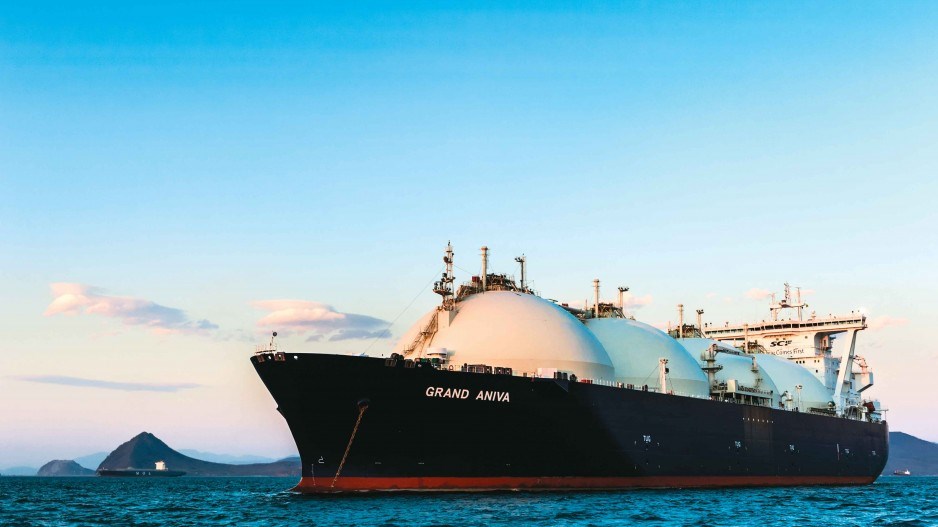Collapsing oil prices, lower demand for gas in Japan thanks to resumption of nuclear power generation, market and economic uncertainty in China and new sources of liquefied natural gas from Australia.
These are the short-term challenges for new liquefied natural gas (LNG) plants coming online, especially in Australia.
But it’s the longer-term competition from renewable energy in Europe and Asia that might pose the biggest challenge for the “second wave” of LNG projects proposed for B.C. and the U.S. Gulf Coast, according to a new Brattle Group analysis, LNG and Renewable Power: Risk and Opportunity in a Changing World.
The report cites several LNG projects yet to be built in B.C. and on the U.S. Gulf Coast as potentially risky ventures.
The near-term risks include falling oil and LNG prices. Asian LNG prices have dropped in recent years from US$15 per million British thermal units (MMBtu) to US$6 to US$7 per MMBtu.
Companies building new multi-billion-dollar LNG plants need a delivered price of US$10 to US$11 per MMBtu to turn a profit, the Brattle report states.
The demand for natural gas for power generation is projected to double in Asia (mainly in China, Japan, South Korea and Taiwan) over the next 20 years. The Brattle report acknowledges that a glut of LNG coming onto markets now could be short-lived.
But investment in renewable energy in key European and Asian markets is also expected to dramatically increase as renewables like wind and solar power become more cost-competitive.
“The investment risk of these proposed LNG export projects is increasing because there is a significant possibility that, over the 20 years of a typical LNG contract, power production from renewable energy sources will become less costly than the LNG sales prices needed to justify the upstream LNG investment cost (even without considering the value of avoided greenhouse gas emissions),” the report concludes.
Twenty LNG projects are proposed for B.C., five of which are expected to proceed.
The two largest are proposed by Shell and Petronas, both of which have massive capital costs estimated at between $40 billion and $50 billion each.
The Brattle report comes at a time when concerns are being raised over Petronas’ ability to follow through on a conditional final investment decision it made last year on the Pacific NorthWest LNG project in Prince Rupert.
An internal Petronas memo obtained by the Wall Street Journal reported the Malyasian energy giant is planning to slash capital and operating spending by US$11 billion over four years.
That may cause some angst in B.C., since the US$11 billion cited happens to be roughly the capital cost of the Pacific NorthWest LNG plant in Prince Rupert.
But Petronas has other large projects on the drawing board, and some industry insiders expect the company may simply spread the spending reductions over multiple projects, rather than scrap a single large-scale project.
Moreover, Petronas’ new CEO recently confirmed that the company plans to move forward with US$80 billion in capital spending over the next five years.
The company recently leased two floors of Park Place in downtown Vancouver – an indication the company appears committed to moving ahead with its B.C. project.
David Austin, a lawyer specializing in energy with Clark Wilson LLP, said it’s inevitable that renewables will eventually supplant power generation from fossil fuels.
But, he said, coal will be the first fossil fuel to be supplanted, mostly through climate action policies such as carbon pricing and regulation, something that is already well underway in the U.S.
He adds that the Brattle report focuses solely on the demand for gas and LNG in the utility power sector and ignores other important markets such as heating and transportation.
“The report is deficient because it assumes that the sole purpose for LNG is for electrical generation,” Austin said. “It will be wonderful when you get to the point where renewables completely displace fossil fuels, but we’re not there yet, and you also have to think in terms of both the electricity generation markets and the transportation markets.”
Simon Fraser University sustainable energy professor Mark Jaccard told Business in Vancouver that the biggest challenge to B.C. LNG projects is not renewables, but rather “gas-on-gas competition” in Asian markets – China, Japan, Korea and Taiwan.
“There will be a rising demand for gas in China over the next few decades ... even with the rapid development of renewables,” Jaccard said. “So renewables are not the threat.”
The biggest obstacle, he said, is competition in Russia and China itself, which has its own large, as yet unexploited shale gas and coal-bed methane deposits.
Russia, whose primary customers are Japan and South Korea, already supplies 4% of the world’s LNG from its Sakhalin-2 LNG plant, which Gazprom and Shell are planning to expand.
Russia will also provide China with new gas supplies from the Power of Siberia gas pipeline that Russia is building under a 30-year offtake agreement with China.
Brad Hayes, president of oil and gas consulting firm Petrel Robertson, doesn’t think renewable energy will supplant natural gas power any time soon, because renewables still face technical and cost challenges.
“If I were an LNG developer right now, I would regard the potential impact of renewables competition as a relatively minor risk factor for my target markets, particularly in Asia,” he said.




